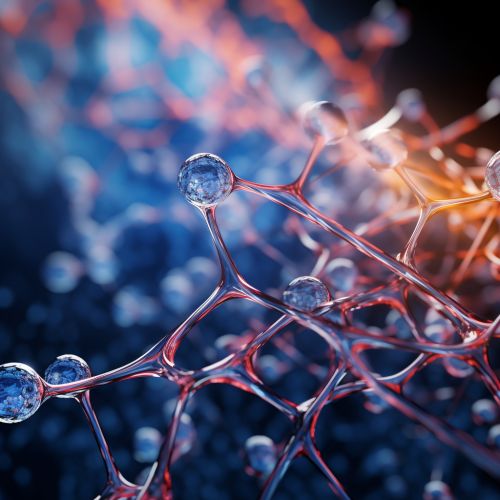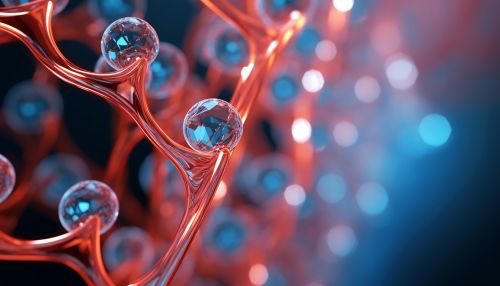F-ATPases
Overview
F-ATPases, also known as ATP synthases, are complex enzymes that play a crucial role in energy conservation in cells. They are found in the membranes of bacteria, mitochondria, and chloroplasts, where they catalyze the synthesis of ATP from ADP and inorganic phosphate, a process driven by the transmembrane flow of protons. This process is fundamental to life, as ATP serves as the main energy currency in cells.


Structure
F-ATPases are composed of two main structural domains: F1 and Fo. The F1 domain is a large protein complex that protrudes into the cytoplasm and contains the catalytic sites for ATP synthesis. The Fo domain is embedded in the membrane and forms a channel for proton translocation.
F1 Domain
The F1 domain is a multisubunit complex made up of five different types of subunits: α, β, γ, δ, and ε. The α and β subunits form a hexameric ring structure, with three of each type alternating around the ring. The γ, δ, and ε subunits form a central stalk that extends from the ring into the Fo domain.
Fo Domain
The Fo domain is also a multisubunit complex, but its composition varies among different organisms. In bacteria, it typically consists of three types of subunits: a, b, and c. The a and b subunits form a peripheral stalk that connects the Fo domain to the F1 domain, while the c subunits form a ring in the membrane that rotates as protons pass through it.
Function
The primary function of F-ATPases is to synthesize ATP, the main energy carrier in cells. They do this by coupling the exergonic flow of protons across a membrane (from a region of high proton concentration to a region of low proton concentration) with the endergonic synthesis of ATP from ADP and inorganic phosphate.
When protons flow through the Fo domain, they cause the c ring and the central stalk of the F1 domain to rotate. This rotation induces conformational changes in the α and β subunits of the F1 domain, leading to the synthesis of ATP.
In addition to ATP synthesis, some F-ATPases can also operate in reverse, functioning as ATP-driven proton pumps. This reverse operation is important in certain physiological conditions, such as the acidification of intracellular compartments.
Evolution
F-ATPases are highly conserved enzymes, indicating their fundamental importance in biology. They are believed to have evolved from a common ancestor, with the F1 domain evolving from a family of DNA-binding proteins and the Fo domain evolving from a family of membrane transport proteins.
Despite their conservation, F-ATPases exhibit some diversity in their structure and function, reflecting adaptations to different cellular and environmental conditions. For example, the F-ATPases of thermophilic bacteria have evolved to function at high temperatures, while those of photosynthetic organisms have evolved to operate in the light-dependent synthesis of ATP.
Clinical Significance
Mutations in the genes encoding F-ATPases can lead to a variety of human diseases, collectively known as mitochondrial disorders. These diseases are often characterized by impaired energy metabolism, leading to symptoms such as muscle weakness, neurological disorders, and organ failure.
In addition, some bacteria and parasites use F-ATPases as drug targets. For example, the antibiotic oligomycin inhibits the Fo domain of F-ATPases, leading to the death of the organism.
